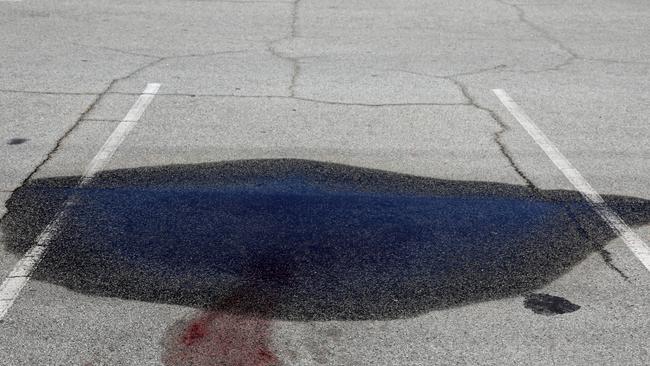Isolated Aussie teens at risk from violent, extremist terror groups
An expert has outlined why Aussie teens are at risk of being snared by extremist or terror groups and how authorities can help stop that.

Social
Don't miss out on the headlines from Social. Followed categories will be added to My News.
A leading expert on extremism has revealed what is pushing vulnerable Aussies into extremist “echo chambers”, suggesting modifications in how the country handles its deradicalisation programs is needed following the fatal shooting of a radicalised Perth teenager.
The violent incident earlier this month in Willetton, in the city’s south, pushed extremist narratives back into the forefront just a month after a Sydney bishop was allegedly stabbed by another teen in what police have branded a religiously motivated terrorist act.
It has since been revealed the 16-year-old Willetton teen – who had been radicalised online and claimed to have joined the terror group al-Qaeda – was enrolled in a support program designed to disengage people from violent extremism.
Two of the core programs, run at a federal level in conjunction with state and territory governments, include the Living Safe Together Intervention Program (LSTIP) and the High Risk Rehabilitation and Reintegration Program (HRRRP).


Both are bankrolled by more than $38m in federal funding to address radicalisation, particularly among young people.
There are 141 people across the country enrolled in the LSTIP program.
In a statement, a Department of Home Affairs spokeswoman told NewsWire that participation in both programs was considered “voluntary”.
“Suitable participants are referred to practitioners who assess the individual’s risk factors and needs,” a Home Affairs spokeswoman said.
“States and territories then tailor interventions to the individual’s needs and connects the individual to the appropriate support services, such as psychologists, education and employment services, social services, and health services.”
But University of WA Centre for Muslim States and Societies director Samina Yasmeen questioned whether more needed to be done to address the individual needs of participants, especially in regards to their cultural and religious backgrounds.
Professor Yasmeen said the risk of young people falling into “echo chambers” was as a result of young people seeking pathways to develop their identity, especially around the ages of 15-20.
She explained that increased access to the internet at a time when mental health was a serious issue risked pushing people to seek out “negative narratives” through these echo chambers over social media.

“Covid-19 also contributed to the sense of hopelessness, so they’re just getting out of it,” Professor Yasmeen said.
“What we’re really looking at is a stage in young people’s lives when they know how to use online information, they’re trying to find answers to their identity and have other mental health issues.
“In that phase, when they’re looking for answers … they can get exposed to negative narratives, or militant ones.”
The workings of social media algorithms meant the same group of people were more likely to be exposed to more radical information and pushed further into echo chamber groups, Professor Yasmeen said.
“That’s where the role of psychosocial and religious support is important,” she said.
Following the death of the 16-year-old, authorities revealed the same teenager had built a homemade bomb that was used to blow up a toilet at his school.
Students at the same school spoke of how the teenager was “just like any other classmate” and he “prayed 24/7 and read the Koran on the bus”.
The teenager had sent one final message on social media that said he would be embarking on the “path of jihad … for the sake of Allah”, warning contacts to “clear” incriminating evidence from devices like laptops and phones.

He had been known to police since the age of 14 and had mental health issues.
Professor Yasmeen said experts needed to ask whether those who were providing mental health support for young people enrolled in deradicalisation programs were conversing with “cultural and social diversity which shapes these people”.
She pointed to people who might have Muslim or even Hindu Sikh or Buddhist backgrounds who relied on teachings from their religious leaders.
“Are they aware of what kind of ideas they are exposed to? Do we have people who know about their culture and how a young person from that background, even if born in Australia, would be looking at these issues?” Professor Yasmeen asked.
She said religious or faith leaders needed to be aware of or trained in how to engage with the mental health of young people who were at risk of radicalisation.

“We need to equip them with the knowledge which can help them,” she said.
“My view has been, for a number of years, that in a predominantly multicultural society like Australia, young people are growing up with multiple senses of their identities.
“So they belong to their religious community and ethnic community, their schools and then they’re part of the wider community.
“We need to understand how young people are given the kind of narratives they are exposed to from their family, friends, school and online and in other environments … and see how they think of themselves.”
In its statement, the Department of Home Affairs said the LSTIP program received referrals from “a range of Commonwealth and state/territory departments and community leaders or individuals in tailoring an individual’s recommended support services”.
By comparison, it said the HRRRP delivered intervention services to “high-risk violent extremists being managed in the community, on remand, in custody, or on post-custodial orders”.
“The program may also be suitable for individuals returning to Australia from international conflict zones,” a Home Affairs spokeswoman said.
“The HRRRP provides an intervention service akin to the LSTIP; however, the intensity of intervention services is relative to their increased risk.”
The spokeswoman said each state and territory was responsible for the delivery of both programs.
Originally published as Isolated Aussie teens at risk from violent, extremist terror groups



